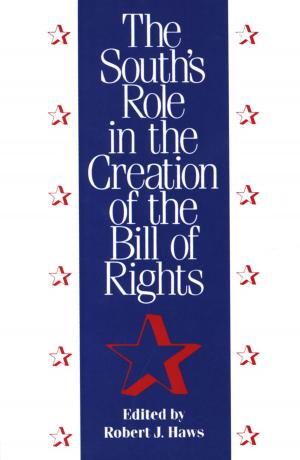| Author: | Jorg Aadahl | ISBN: | 9781301967063 |
| Publisher: | Jorg Aadahl | Publication: | September 14, 2012 |
| Imprint: | Smashwords Edition | Language: | English |
| Author: | Jorg Aadahl |
| ISBN: | 9781301967063 |
| Publisher: | Jorg Aadahl |
| Publication: | September 14, 2012 |
| Imprint: | Smashwords Edition |
| Language: | English |
INTRODUCTION
There is a wide gap between the vast majority of people who rarely say anything outside their own polite circle of family and friends, and the few who write books and articles about various topics, often expressing very strong opinions from one extreme to the other. In-between we have newspaper columnists and radio and TV personalities who express their opinion, also at times with one extreme position or another.
Letters to the Editor (LTE) serve an extraordinarily important function by letting the more or less common individual express an opinion, add insight, weed out misunderstandings, influence people, and help spread enlightenment, - or in many cases unfortunately, bigotry. Such letters fill the gap between the many who say nothing and books and articles too heavy and time consuming for most of us. It is amazing what can be expressed in a few words in a readers’ opinion section of a newspaper. Opinion letters are as close to grass roots as you can get. And, they do have an impact! Whether left-oriented, right-oriented, or des-oriented, the opinion page with LTE’s is often read with greater interest and by more people than he rest of the paper, - with the possible exclusion of the obituaries that older people seem to gravitate to.
WRITING LETTERS TO AN EDITOR, - ANY EDITOR
It is a thrill to see your name in print, not as part of a police blotter, but underneath something you have written and which an editor judged worthy of space. You’ll get used to it!
Most papers will not accept anonymous letters. Personally, I think that’s the way it should be. Why not stand for what you write and express as your opinion?
Most of the time a letter to the editor will be acknowledged, often with a polite thank you and reminder that the paper is inundated with an avalanche of letters, few of which will be selected for publication due to space limitations.For more advice, go to “Good advice for letter writers” at the end of this book. Here you’ll find a column by Jon Mays, Editor of the San Mateo Daily Journal, and a piece on letter writing from the Planned Parenthood’s web site.
REJECTS? DON’T WORRY! –
we’re all occasional rejects!
Oh, big surprise, - your first letter to a local newspaper of your choice didn’t make it to print? Join the club of us rejects! Get used to it, since most letters will not be published. But don’t give up! Some of my very best letters have been rejected. Actually, I have been rejected by some of the most prestigious papers in the country! Isn’t that something to brag about?
With the possible exception of very small papers in small communities, most newspapers receive far more letters to the editor than for which they have space. Most papers have guidelines in terms of maximum number of words, and how often they will publish letters from the same writer. Enforcement of such guidelines is up to the editor and may be ignored for letters that the editor really likes. I have had letters published on two consecutive days in the same paper, but that is a rather rare exception. I’ve also had letters exceeding the stated maximum limit published, but not often. If the editor likes the content, he she may ask you to shorten it some. At times you may wonder why they didn’t print your letter instead of an absolutely ridiculous submittal from an intellectually challenged moron. It is often hard to tell why certain letters are selected for publication, while others are rejected. At times I suspect that the editor simply wants to hang out someone, or display a new low for understanding an issue or a new high for bigotry. Occasionally, I’m surprised to see a particularly radical or progressive letter of mine published, even in a paper not exactly famous for sharing my views. An editor’s mind works in mysterious ways!
INTRODUCTION
There is a wide gap between the vast majority of people who rarely say anything outside their own polite circle of family and friends, and the few who write books and articles about various topics, often expressing very strong opinions from one extreme to the other. In-between we have newspaper columnists and radio and TV personalities who express their opinion, also at times with one extreme position or another.
Letters to the Editor (LTE) serve an extraordinarily important function by letting the more or less common individual express an opinion, add insight, weed out misunderstandings, influence people, and help spread enlightenment, - or in many cases unfortunately, bigotry. Such letters fill the gap between the many who say nothing and books and articles too heavy and time consuming for most of us. It is amazing what can be expressed in a few words in a readers’ opinion section of a newspaper. Opinion letters are as close to grass roots as you can get. And, they do have an impact! Whether left-oriented, right-oriented, or des-oriented, the opinion page with LTE’s is often read with greater interest and by more people than he rest of the paper, - with the possible exclusion of the obituaries that older people seem to gravitate to.
WRITING LETTERS TO AN EDITOR, - ANY EDITOR
It is a thrill to see your name in print, not as part of a police blotter, but underneath something you have written and which an editor judged worthy of space. You’ll get used to it!
Most papers will not accept anonymous letters. Personally, I think that’s the way it should be. Why not stand for what you write and express as your opinion?
Most of the time a letter to the editor will be acknowledged, often with a polite thank you and reminder that the paper is inundated with an avalanche of letters, few of which will be selected for publication due to space limitations.For more advice, go to “Good advice for letter writers” at the end of this book. Here you’ll find a column by Jon Mays, Editor of the San Mateo Daily Journal, and a piece on letter writing from the Planned Parenthood’s web site.
REJECTS? DON’T WORRY! –
we’re all occasional rejects!
Oh, big surprise, - your first letter to a local newspaper of your choice didn’t make it to print? Join the club of us rejects! Get used to it, since most letters will not be published. But don’t give up! Some of my very best letters have been rejected. Actually, I have been rejected by some of the most prestigious papers in the country! Isn’t that something to brag about?
With the possible exception of very small papers in small communities, most newspapers receive far more letters to the editor than for which they have space. Most papers have guidelines in terms of maximum number of words, and how often they will publish letters from the same writer. Enforcement of such guidelines is up to the editor and may be ignored for letters that the editor really likes. I have had letters published on two consecutive days in the same paper, but that is a rather rare exception. I’ve also had letters exceeding the stated maximum limit published, but not often. If the editor likes the content, he she may ask you to shorten it some. At times you may wonder why they didn’t print your letter instead of an absolutely ridiculous submittal from an intellectually challenged moron. It is often hard to tell why certain letters are selected for publication, while others are rejected. At times I suspect that the editor simply wants to hang out someone, or display a new low for understanding an issue or a new high for bigotry. Occasionally, I’m surprised to see a particularly radical or progressive letter of mine published, even in a paper not exactly famous for sharing my views. An editor’s mind works in mysterious ways!















